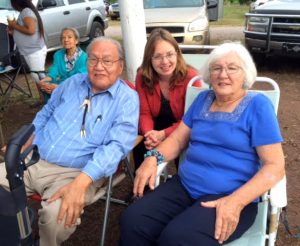You can’t refuse a peace chief.

That’s the tantalizing start of an article about Professor Kimberly Schmidt and how she was drawn into the research behind her recently published young adult novel “Magpie’s Blanket” (University of New Mexico, 2016) about a female survivor of the 1868 Washita Massacre.
Schmidt, director of Eastern Mennonite University’s Washington Community Scholars’ Center in Washington D.C., is featured in an article titled “The Woman At the Center of the Story,” written by Melanie Zuercher and published on the Bethel College website.
Schmidt is a 1984 graduate of Bethel College, and earned her doctorate in American history from Binghamton University in 1995.
The peace chief Schmidt couldn’t ignore is Southern Cheyenne chief Lawrence Hart, also a Bethel College graduate. Hart first heard about Schmidt in 2003 during the planning of a major academic conference on the relationship between the Mennonites and the Southern Cheyenne and Arapaho in Oklahoma.
Schmidt, then a member of the Historical Committee of Mennonite Church USA, was approached in an Oklahoma parking lot by his wife, Betty, and author Raylene Hinz-Penner.
There she heard a message: “‘Lawrence wants you to write a women’s history of the Southern Cheyenne for the conference.’”
Read more about Schmidt’s historical research and the people who shaped and influenced her work on what became a 10-year project.
Purchase the book through University of New Mexico Press. Proceeds support the Cheyenne Cultural Center in Clinton, Oklahoma, which was started by Hart in 1977 to help preserve Cheyenne culture. The foreword is written by Dr. Henrietta Mann, former president of the Cheyenne & Arapaho Tribal College.
Read reviews in Mennonite Life and The Mennonite World Review.
